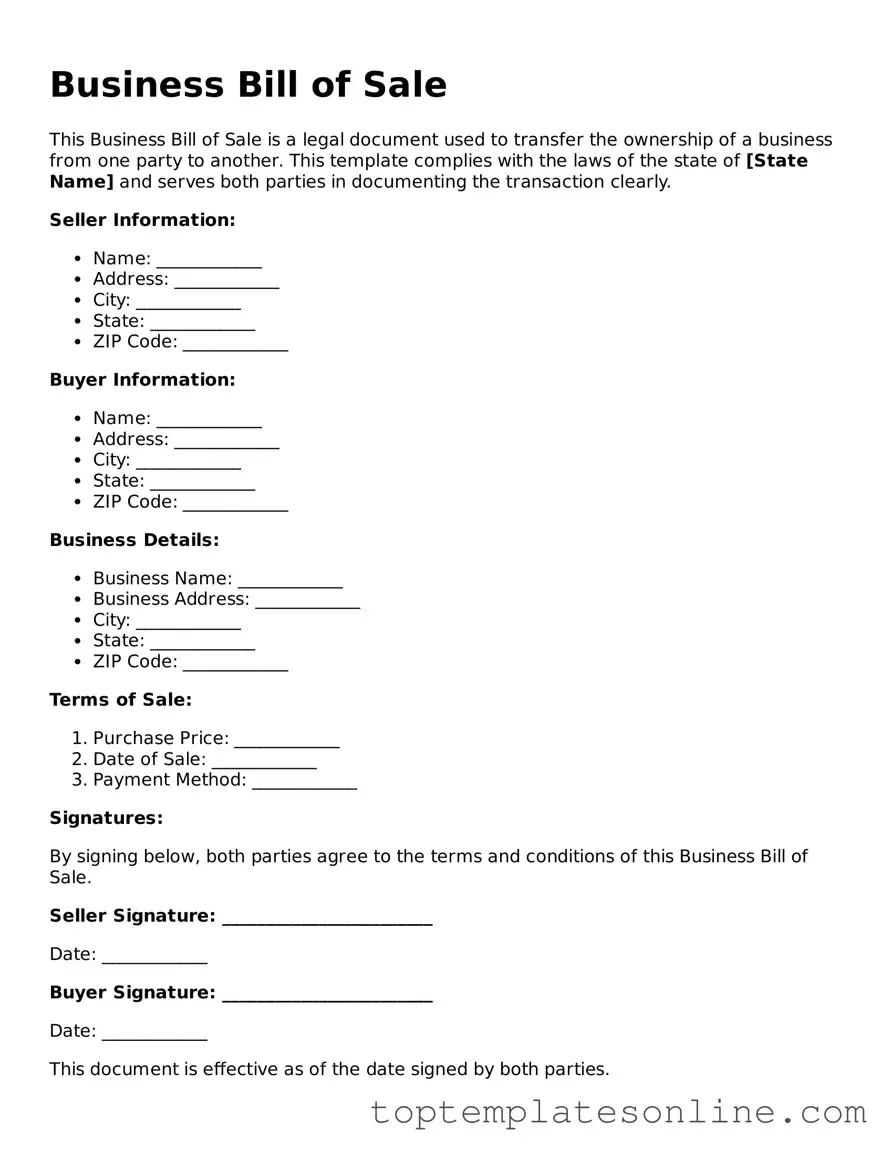The Business Bill of Sale form serves as a critical document in the transfer of ownership for a business or its assets, ensuring that both the seller and buyer are protected during the transaction. This form outlines essential details such as the names and addresses of both parties, a clear description of the business or assets being sold, and the agreed-upon purchase price. By documenting the terms of the sale, it helps to mitigate potential disputes that may arise post-transaction. Additionally, the form may include representations and warranties from the seller regarding the condition and legality of the business, further safeguarding the buyer's interests. Signatures from both parties are required to validate the agreement, making it a legally binding document. Understanding the components and implications of the Business Bill of Sale is vital for anyone involved in the sale or purchase of a business, as it lays the groundwork for a smooth transition of ownership and ensures compliance with relevant laws and regulations.
